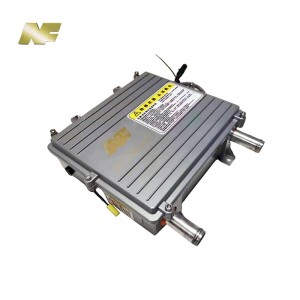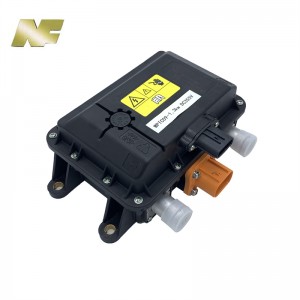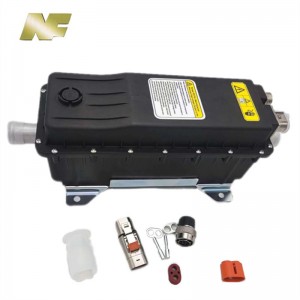The automotive industry has made significant progress in coolant heating technology in recent years. Manufacturers have introduced innovative options such as HV coolant heaters, PTC coolant heaters, and electric coolant heaters that have revolutionized the way vehicles are warmed up in cold weather. These cutting-edge systems offer numerous benefits, from reduced emissions to improved fuel efficiency, making them a hot topic among automakers and consumers.
High voltage coolant heater:
At the forefront of the coolant heating revolution are HV (high voltage) coolant heaters. This state-of-the-art technology uses high-voltage electricity to heat coolant before it circulates through the engine and cabin. This approach ensures that the engine and occupants warm up quickly and comfortably regardless of the outside temperature. Additionally, an HV coolant heater reduces engine wear as it avoids the initial cold start shock, making it an environmentally friendly option.
PTC coolant heater:
Another breakthrough in coolant heating technology is the PTC (positive temperature coefficient) coolant heater. The system consists of small electrical components whose resistance increases as temperature increases. PTC coolant heaters take advantage of this phenomenon to efficiently heat coolant. By providing adjustable and consistent heat output, PTC coolant heaters quickly achieve optimal engine temperature, reducing fuel consumption during warm-up. The technology is highly regarded for its versatility and economic benefits, improving overall fuel efficiency and vehicle performance.
Coolant electric heater:
Electric coolant heaters have become a game changer in the automotive industry. These compact, lightweight devices are mounted directly on the engine and ensure rapid heating of the coolant from the start. The electric coolant heater offers an excellent level of control, allowing the driver or even a smartphone to set the desired heating parameters remotely. This innovation ensures a warm and comfortable interior even in the harshest climates. In addition, electric coolant heaters help significantly reduce emissions and significantly improve air quality.
Environmental benefits:
The implementation of these advanced coolant heating technologies is not limited to passenger comfort; it also has wide-ranging environmental benefits. By reducing the cold start phase, all three systems minimize engine idling time, lowering emissions and improving fuel economy. As stricter emissions standards are implemented globally, automakers are investing heavily in these technologies to meet environmental regulations while improving the overall performance of their vehicles.
Fuel efficiency:
The combination of HV coolant heaters, PTC coolant heaters, and electric coolant heaters have been proven to improve fuel efficiency by reducing heat loss and shortening engine warm-up time. These technologies help optimize the combustion process and efficiently convert fuel into usable energy. By minimizing energy waste, vehicles equipped with these systems can achieve better driving range, save on fuel costs, and help reduce their carbon footprint.
in conclusion:
The automotive industry is undergoing a transformation with the introduction of advanced coolant heating technology. HV coolant heaters, PTC coolant heaters and electric coolant heater systems are revolutionizing vehicle preheating, helping to increase fuel efficiency, reduce emissions and improve overall vehicle performance. As these innovations continue to develop, the future of coolant heating appears promising, with potential applications beyond the automotive industry. It’s an exciting time for the industry as it embraces greener, more efficient technologies to ensure a brighter, sustainable future for transportation.



Post time: Nov-24-2023




